Our drive from Albufeira to Lisbon was easy on a wide and very empty toll highway. Surprisingly we encountered very little traffic until we reached the outskirts of Lisbon where we crossed the large 25 de Abril Bridge over the Tagus River. The bridge looks very similar to the Golden Gate bridge in San Francisco and was actually designed by the American Bridge Company who built the Oakland Bay Bridge in San Francisco. It is the longest suspension bridge in Europe and a dramatic way to arrive in Lisbon!

Lisbon, the capital of Portugal, is set over a series of hills near the mouth of the Tagus river where intrepid navigators embarked in the 15th and 16th century, sailing into unknown waters and charting unknown lands. This time, called the Golden Age of Discovery, is the underpinning of much of the city’s history and culture. Lisbon is blessed with a wealth of historic monuments, museums, parks and a fabulous riverfront promenade stretching for miles. Our apartment is along the western riverfront promenade section in the suburb of Cruz Quebrada, a 15 minute train ride or an hour walk to the center of Lisbon. Our first exploratory walk was to the district of Belem, just over 3 km away towards Lisbon city center where our first stop was the most emblematic of Lisbon’s historical monuments, the Torre de Belem. It is a UNESCO World Heritage Site built in the early 16th century, originally conceived as a lighthouse, it was eventually built as a fortress to guard the entrance to Lisbon’s harbor. The tower was built in the Manueline style, which is Portuguese late Gothic style, with fanciful maritime motifs, gargoyles, twisted rope and armillary spheres. The ticket price was 6 Euros (6.82 USD) each and allowed us to wander around the tower and climb to the top up an impossibly steep spiral staircase. We thoroughly enjoyed our visit to this historic monument.

From the tower we continued along the riverfront coming upon a monument commemorating the first crossing of the South Atlantic by airplane completed by Portuguese aviator Sacadura Cabral and his navigator Gago Coutinho in 1922.
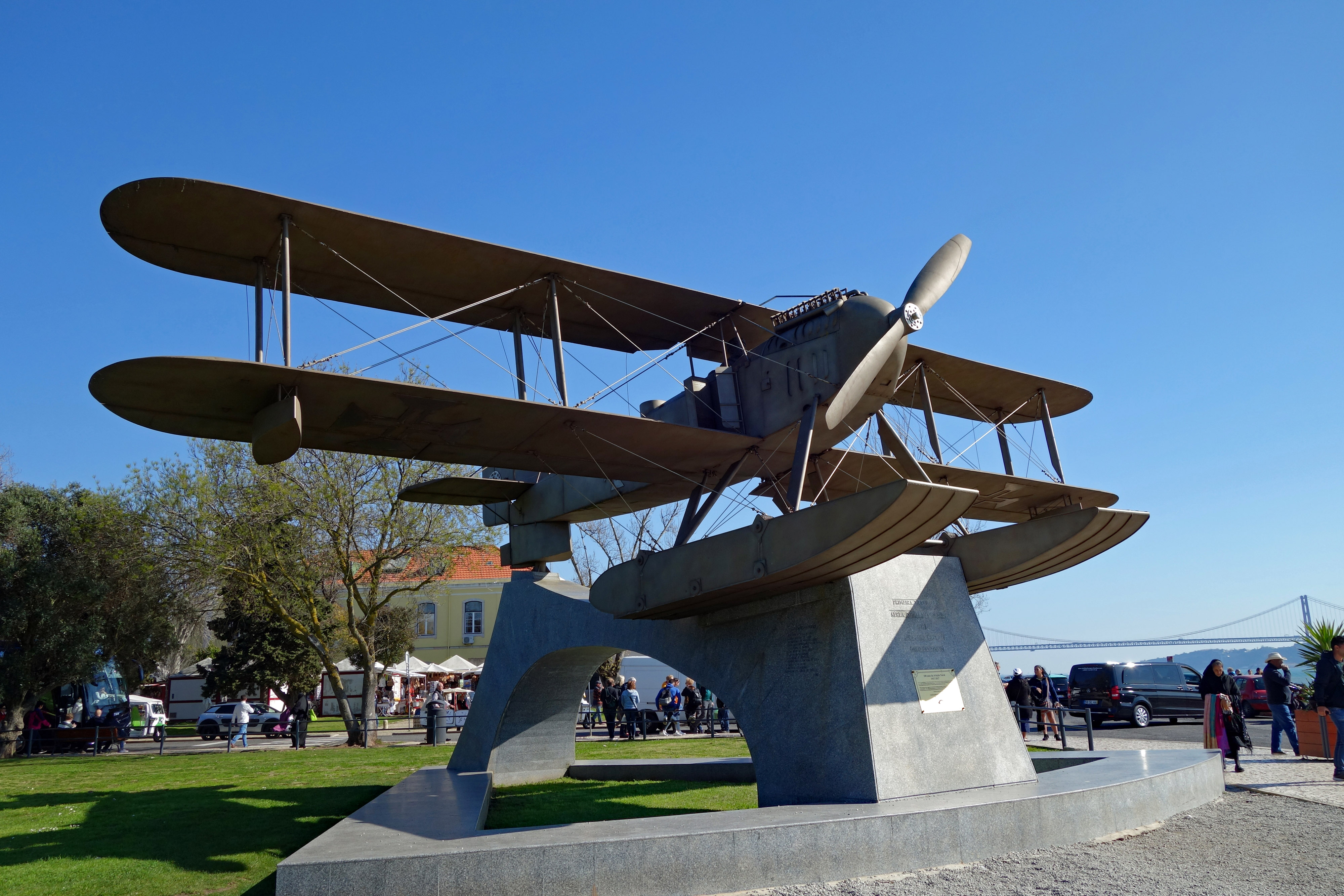
Next we arrived at the Padrao dos Descobrimentos, or Monument to the Discoveries, an enormous maritime monument built in 1960 commemorating Henry the Navigators death 500 years earlier. The monument leans over the River Tagus resembling the prow of a caravel, the type of ship used by Portuguese navigators in the 15th century to discover new lands. There is an amazing frieze of statues on either side of the monument paying tribute to all those actively involved in the Age of Discovery. Henry stands at the very front of the monument, holding a carrack, another type of sailing ship used by the Portuguese. There are typically large crowds around this very popular monument.
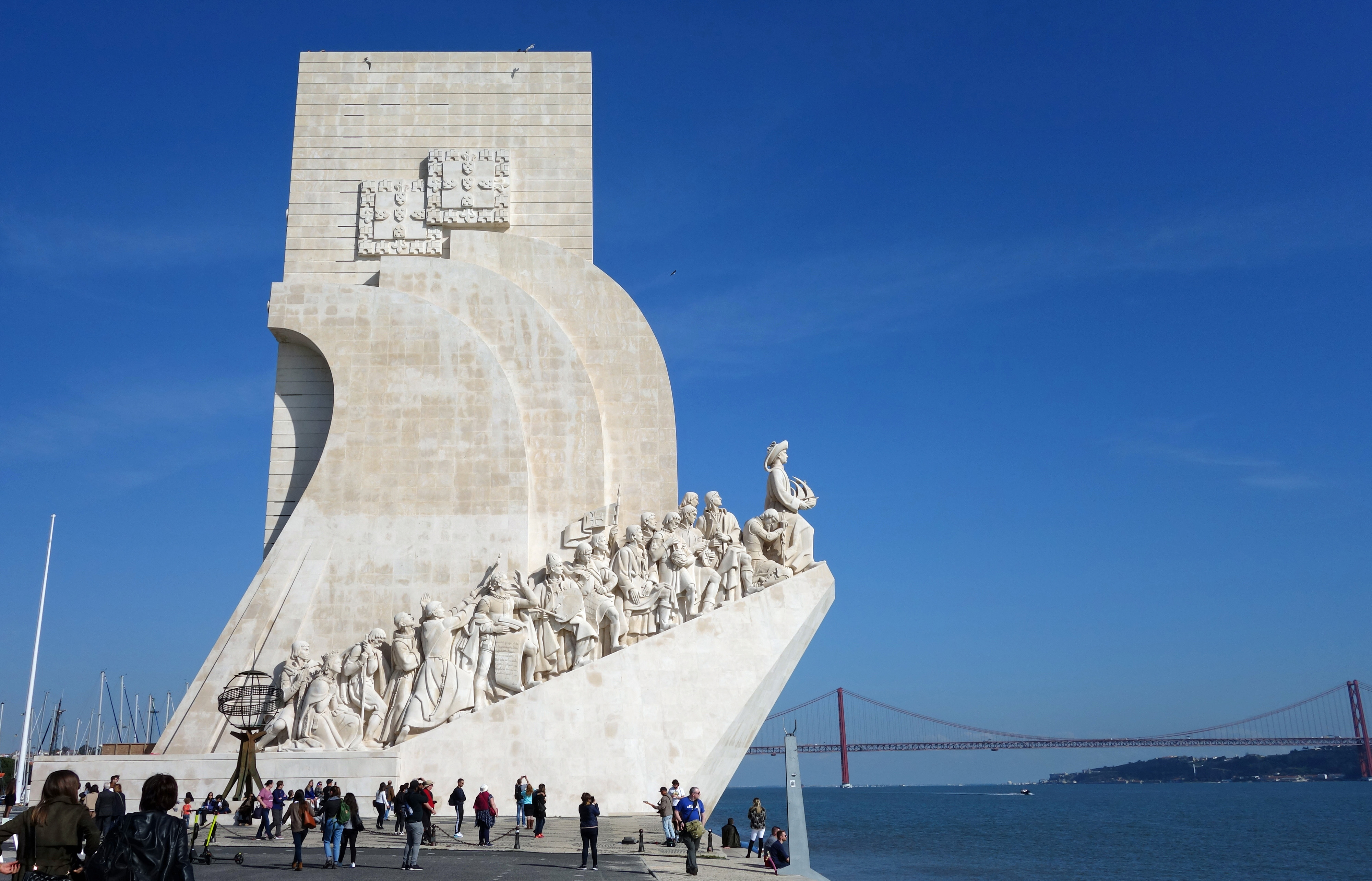
By this time we were hungry for some lunch and enjoyed pizza and a cold drink at an Italian restaurant overlooking the maritime monument. Feeling refreshed we continued our walk through the Jardin de Belem and the two other gardens flanking this large green space. In the Praca do Imperio gardens we came upon two horse statues, which reminded us a little of the Kelpies we saw in Scotland.
The Lisbon creatures are Hippocamps, or a sea horse, with the upper body of a horse and the lower body of a fish with what sometimes looks like a dragon tail. Some of my favorite hippocampi are the winged versions found in the Trevi Fountain, Rome 🙂
From the park we made our way to the cafe Pasteis de Belem to try their famous custard tarts or “pastel de nata” Pasteis de Belem was the first place to sell these sweet treats, opening in 1837 and using an ancient recipe from the Mosterio de Jeronimos. They were delicious!!! Even Blair, who does not like desserts, thought they were not bad 🙂 The cafe was easy to find, just look for the long lineup to purchase the tarts 🙂 Mmmmmm, I may have to pop in again and get a few more before our time in Lisbon is done.
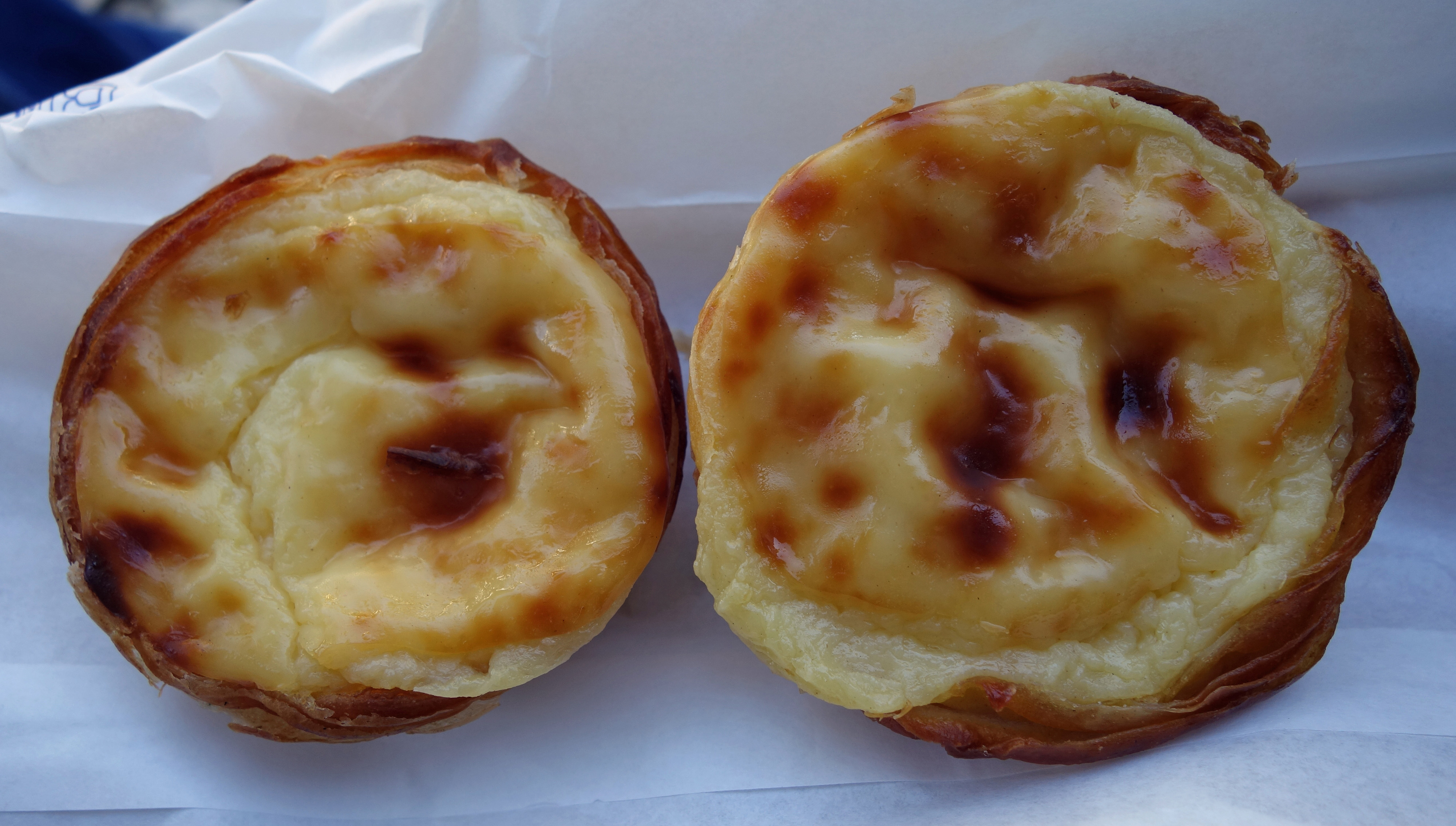
Getting out of Lisbon for a day we drove north to Sintra, once the summer retreat for the Kings and Queens of Portugal, this enchanting destination is filled with royal palaces, mysterious mansions and a mighty castle. Castelo dos Mouros, or the Moorish Castle was our first stop in the area. It is perched high on a hilltop with sweeping views of the valleys and the Atlantic ocean. The castle was established during the 9th century by the North African Moors to guard the town of Sintra. It fell into disrepair and was not rebuilt until the 19th century by King Ferdinand II as part of the gardens of the Pena Palace. The entry ticket cost 8 Euros (9.10 USD) each but once inside and walking the exterior walls we agreed it was well worth it and enjoyed our time there. The castle is built over two hills so the distance from one end to the other along the walls is surprisingly long with many steps, up and down, and viewpoints from each tower.
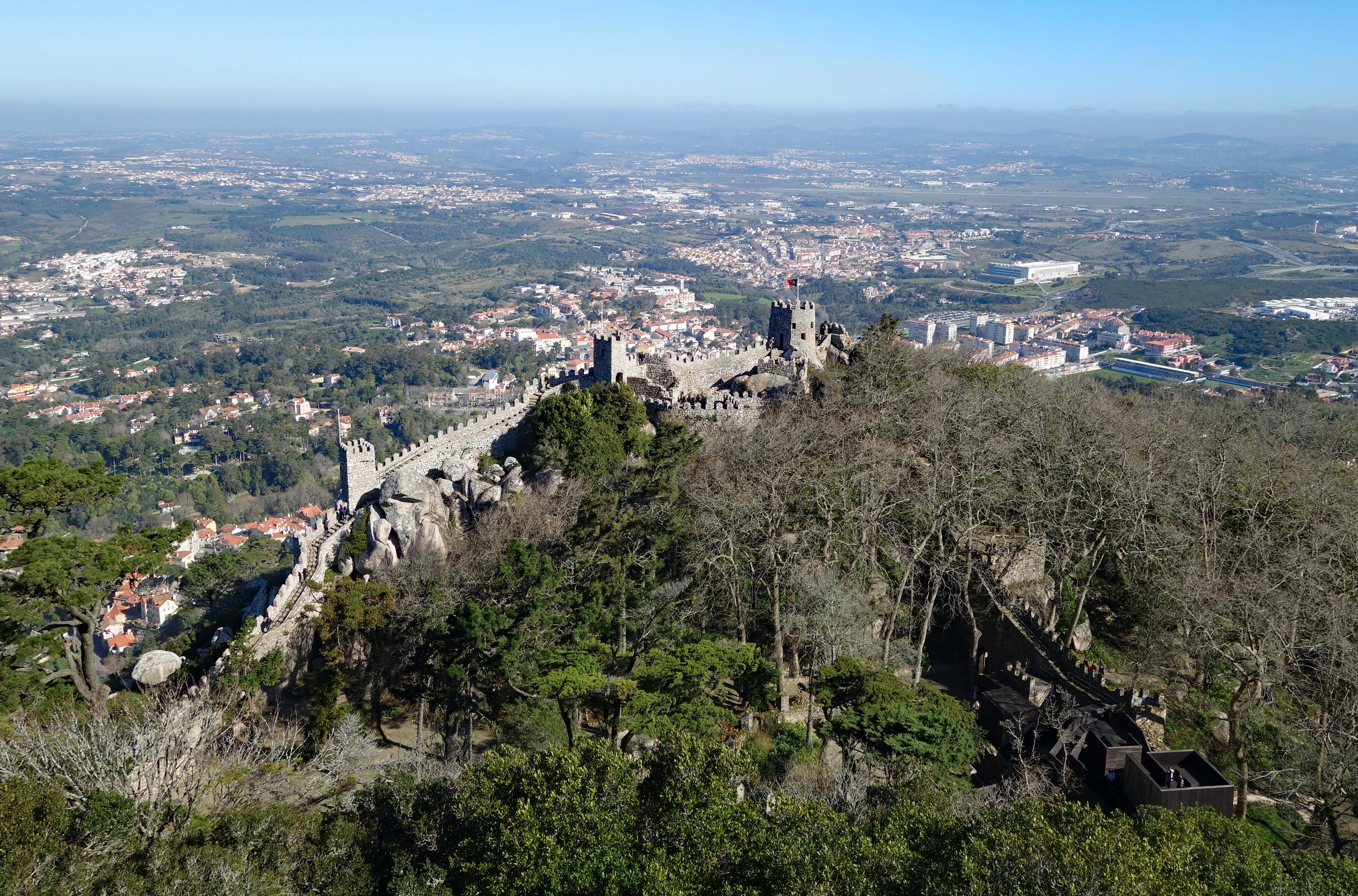
From the Castelo we walked up to the Palacio da Pena entrance but it was extremely busy and did not hold enough appeal to pay the 14.50 Euros (16.50 USD) each cost to walk around the gardens and see a 19th century palace.
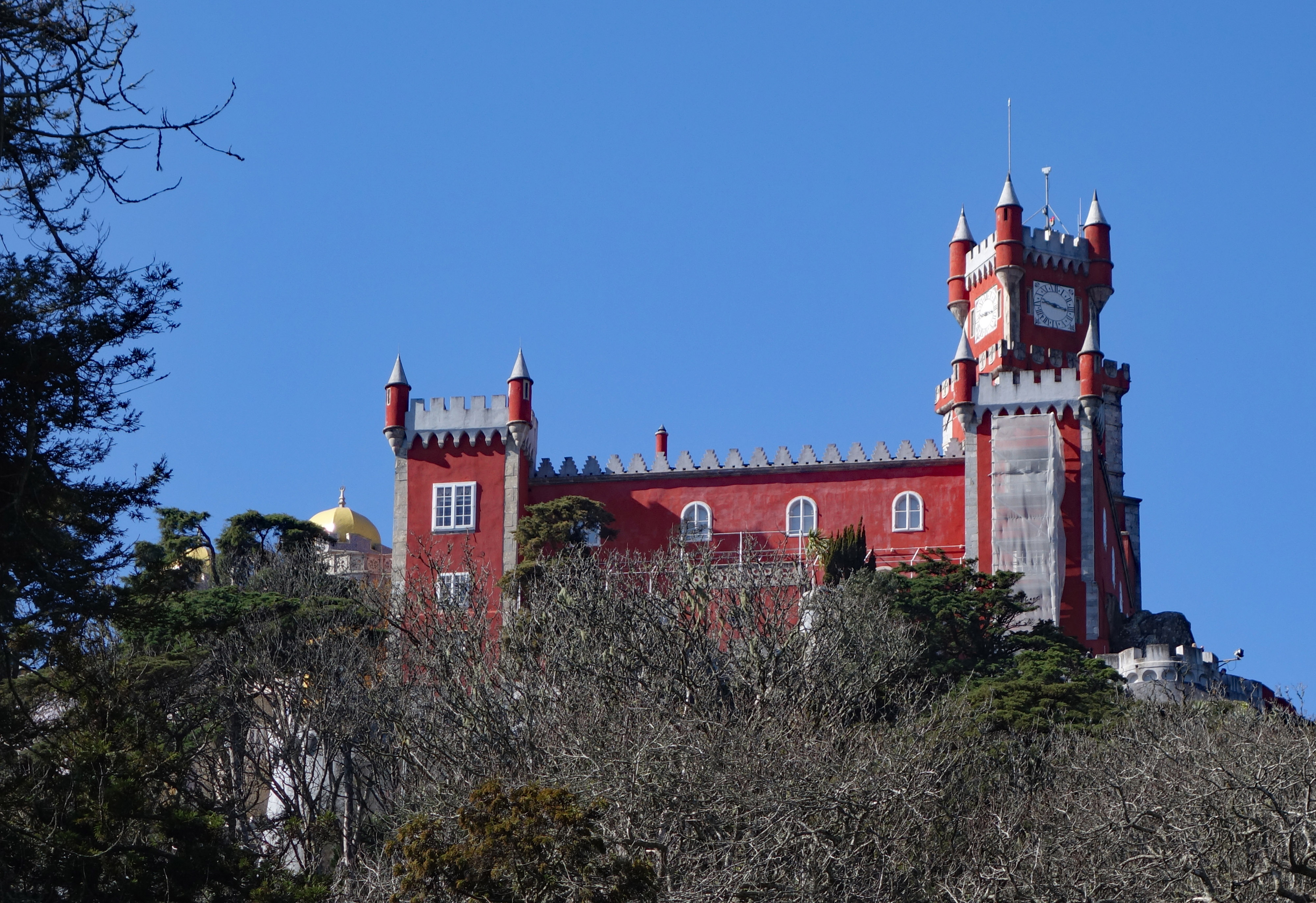
We drove back down the mountain and headed to the coast. Along the way we stopped at an amazing restaurant, Estrela da Serra in the small town of Alcabideche, which I found on Google maps. It turned out to be a gem of a restaurant where we enjoyed a very special Valentine’s lunch, after which we continued our drive west to Cabo da Roca. This is a stunning and windswept cliff top viewpoint marking the dramatic and most westerly point of mainland Europe.

Until the late 14th century these cliffs were believed to be the end of the world. It is a spectacular, desolate coastline with the Atlantic ocean waves pounding the base of the cliffs! There are hiking trails along the top of cliffs and pathways down to some isolated beaches but the howling winds make it challenging to be out there for very long.

After Cabo da Roca we drove south down the coast towards the tourist town of Cascias stopping at the Boca do Inferno viewpoint. It is a scenic cliff formation with waves crashing against the cliffs but after Cabo da Roca it was not quite as high and impressive so we did not stay long, heading back to Lisbon after a great day at the coast.

Blair researched and created a self guided walking tour of the very hilly Lisbon city center including many of the highlights. Our start/end point was the Mercado da Ribeira, which was a fabulous choice. Before beginning our walk I was fortified by a lovely custard tart from Manteigaria, one of the stalls in the Mercado. We also ended our walk here, but more on that later. The first location on our walk was the Praca do Comercio, the largest of Lisbon’s plazas situated on the Tagus river. This was the location where traders would sell their foreign wares and financiers would fund expeditions to far reaches of the world. Built in 1755 after the great earthquake destroyed most of Lisbon, it is the grandest of Lisbon’s squares with painted buildings on 3 sides and a huge statue of King Jose I in the center. On the northern edge is the impressive Arco da Rua Augusta marking the entrance to Rua Augusta, a pedestrian shopping street.

Walking up Rua Augusta we came to our next stop, the Santa Justa Lift, a neo-Gothic elevator and a novel means of public transport looming over the downtown district of Baixa. It’s riveted wrought-iron frame and battleship-grey paint remind one of the Eiffel Tower in Paris, and there is a connection. An apprentice of Gustave Eiffel designed the Lisbon elevator as a means of connecting the lower Baixa neighborhood with the trendy Bairro Alto neighborhood up the steep hill. The elevator was demanded by the affluent citizens of Lisbon after the earthquake and tsunami destroyed Lisbon and they moved their homes to higher ground. It looks like a beautiful piece of art amongst the rather dreary buildings on either side. Today it is more of a tourist attraction and the lineup was very long when we passed by so we opted to walk up the hill instead to enjoy the views of downtown Lisbon.

We continued our walk passing through numerous attractive squares with historic monuments, fountains and interesting buildings, way too many to mention in any greater detail. After a quick lunch stop at a cafe on Rua Augusta we continued on to visit the Lisbon Cathedral. Situated half way up the hill this cathedral dates from the 12th century but has been renovated and rebuilt over the years and in our opinion was not as impressive as the many others we have seen. Running along the road to, and in front of, the Cathedral is the Tram 28 route, another example of public transportation now turned into a tourist attraction, and reportedly a hotbed of pickpockets, we passed on a tram ride with long lines at every stop!

During our meanderings we came upon a couple of very interesting 3D street art installations, both over 20ft in height. There is a lot of street art around Lisbon, but these two by artist Bordallo II captured our attention with his use of trash in the creation of his designs. If you click on his name you will get a bit of history about this local artist.
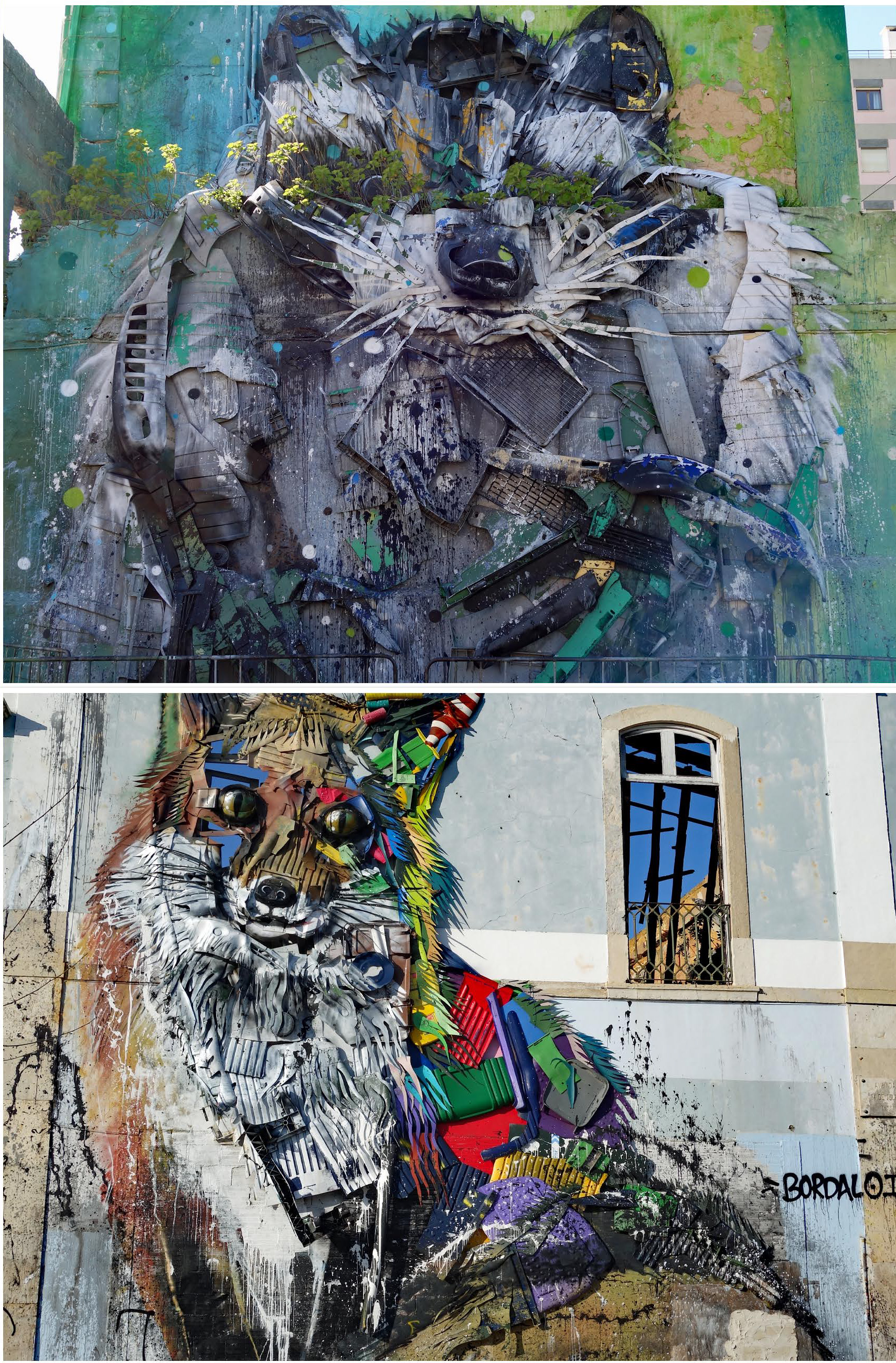
As I mentioned earlier, we finished our walking tour back at the Mercado da Ribeira, this time enjoying a glass, or maybe two, of wine. When we were here earlier the market restaurants were not open yet, they open at noon, so it was relatively quiet, but at 3pm in the afternoon this place was heaving. Every restaurant stall had long lineups and there was not a seat to be found in the central seating area. We bought our wine and wandered around until we spotted two open stools where we sat and enjoyed some fascinating people watching, eventually having a lovely chat with a couple of young university students from Wales on a teaching exchange in Lisbon. What a fun and happening place to hang out for a while, we will be coming back 🙂
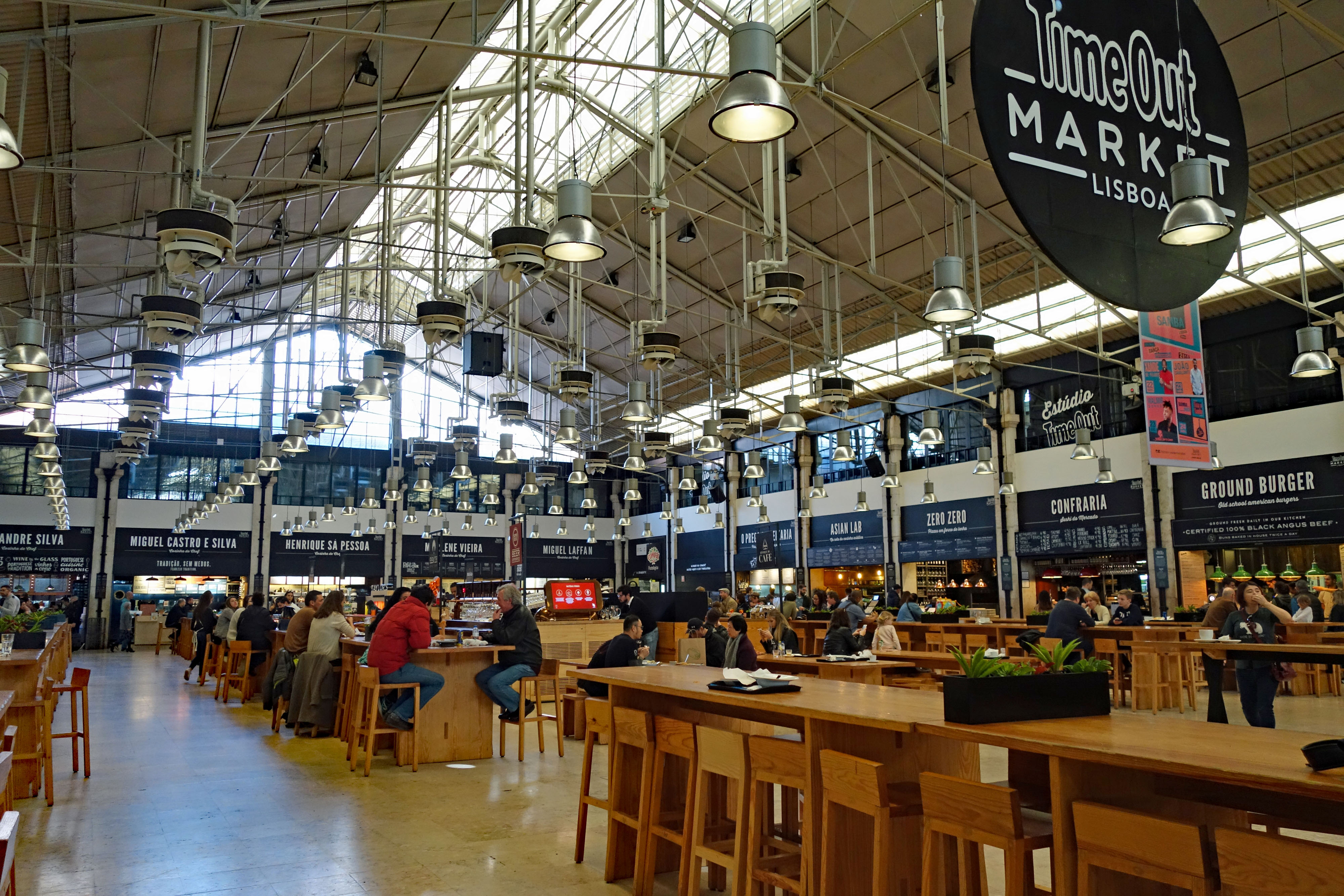
Our next sightseeing day was very cloudy, cold and windy so we did not spend much time out and about. Our first task was to find the “SeaWolf” sculpture by Canadian First Nations artist Luke Marston. We read about this piece on a fellow travelers blog and went in search of it. It sits in a small grassy area across the railroad tracks, making it a challenge to locate, but locate it we did. This sculpture is in Lisbon because in addition to having Canadian First Nations heritage, Luke traces his family history back to Portuguese roots.
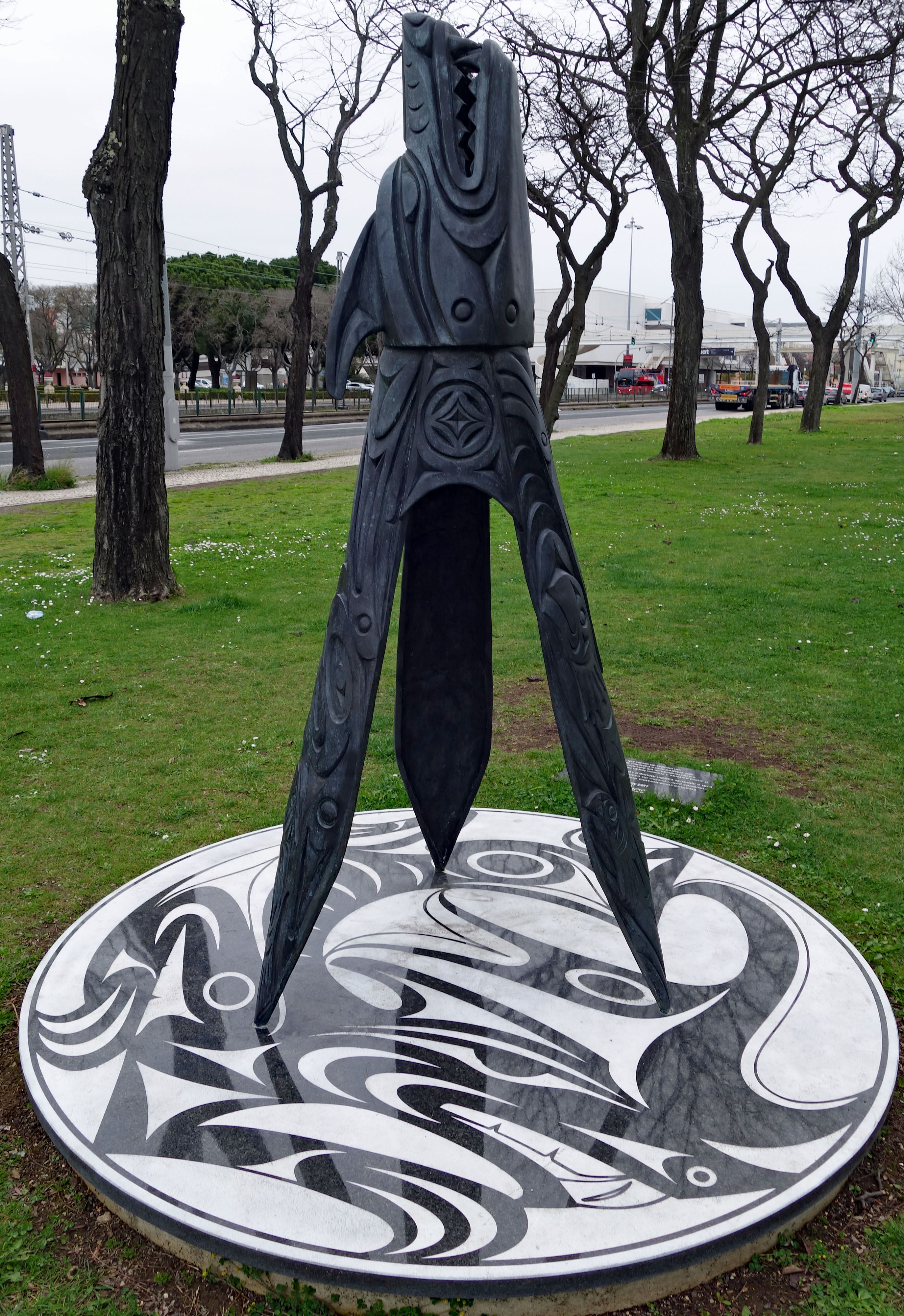
Our next stop was the Basilica da Estrela, a beautiful monument atop one of the 7 hills of Lisbon. We purchased a ticket for 4 Euros (4.50 USD) each allowing us to climb to the top of the Basilica, walk on the roof and then inside the large dome. The views down into the Basilica were amazing but sadly when we descended, the Basilica was closed and we could not walk around the inside ground level. Construction of this basilica began in 1779 and it was completed in 1790.
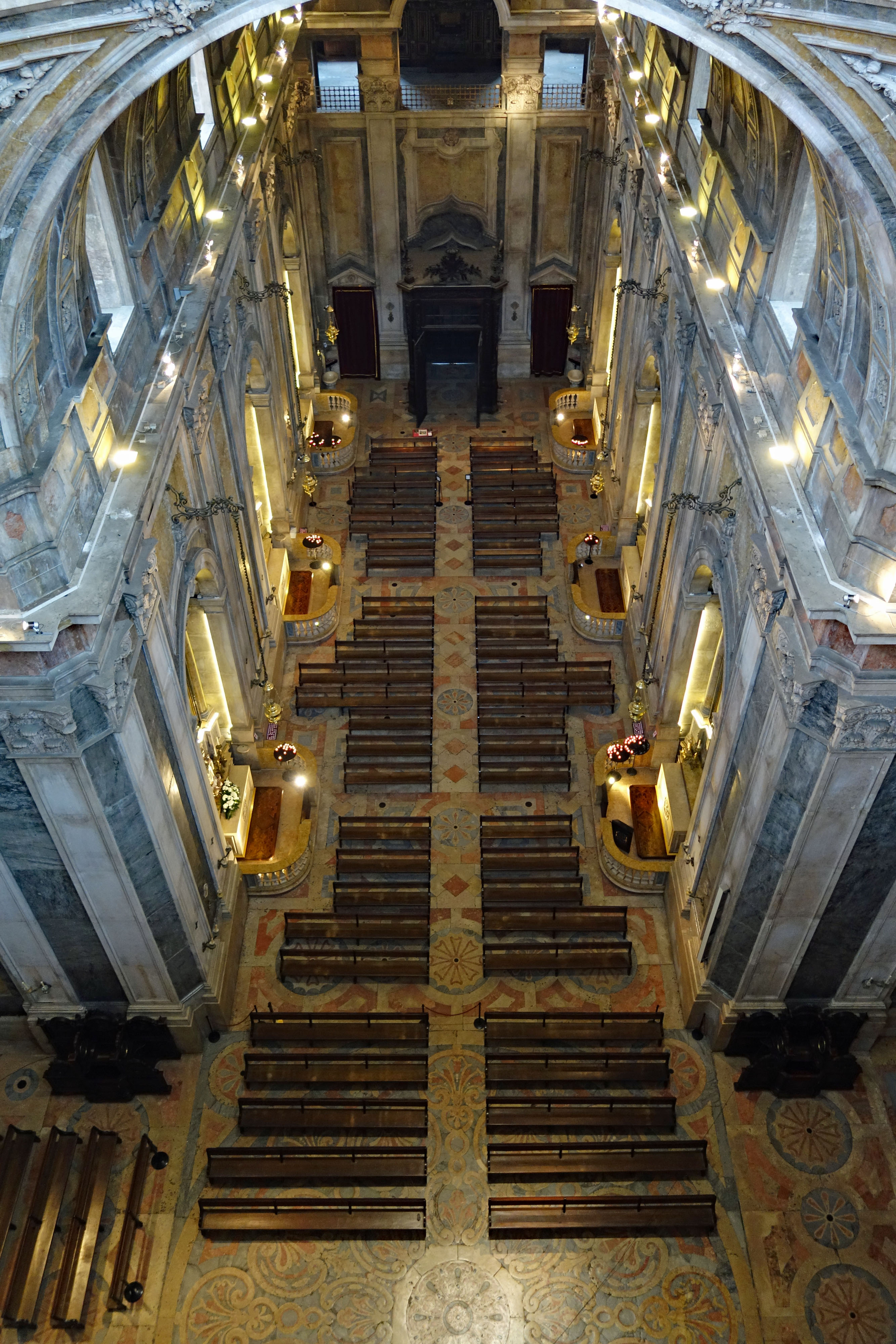
Our next stop took us across the 25 de Abril Bridge to see the Christo Rei statue, inspired by the similar one in Rio de Janeiro, built in 1959 in reverence for Portugal avoiding the horrors of WW2.
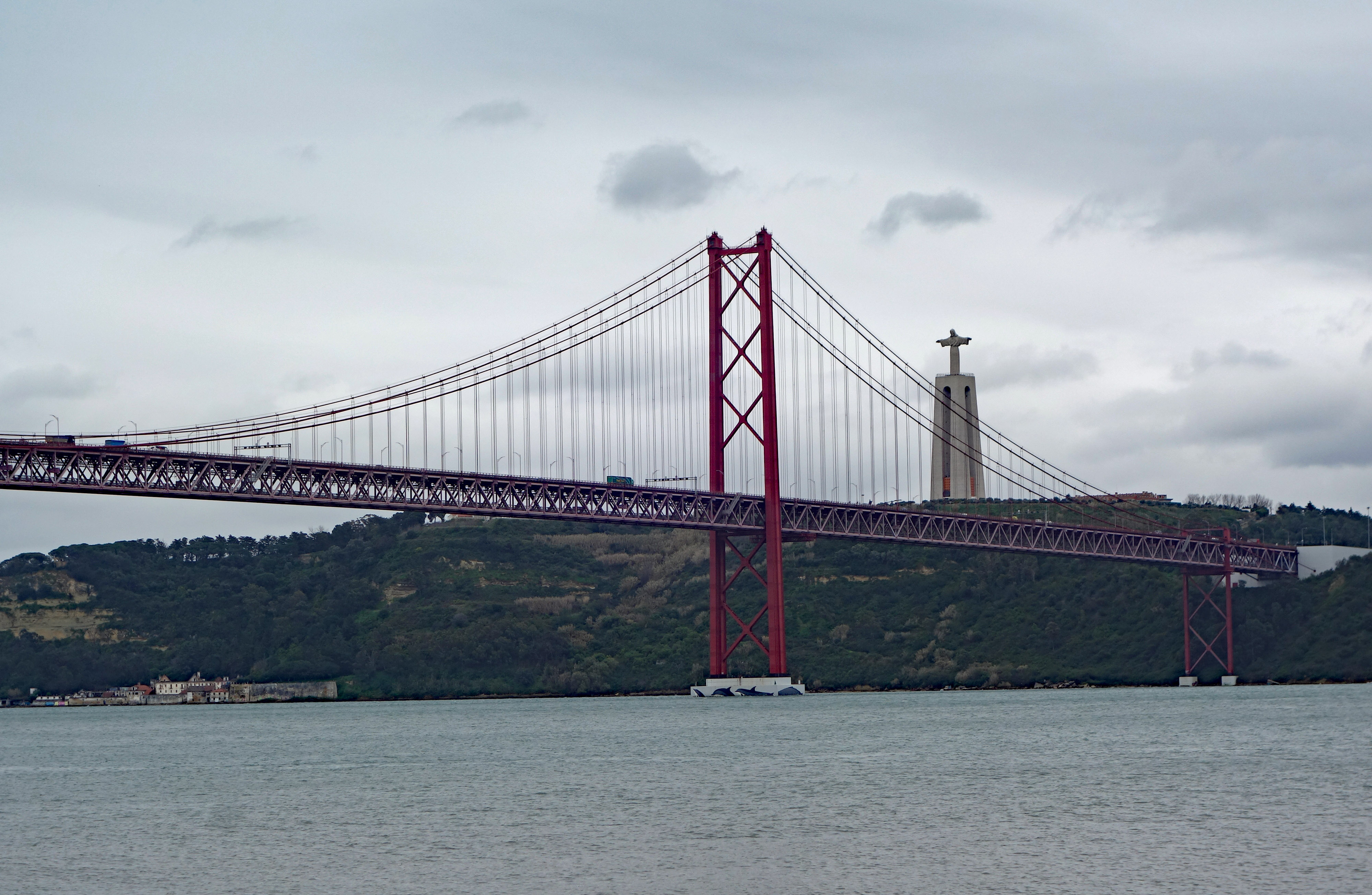
We stopped in for a look at the Church of Santa Maria at the Jeronimos Monastery. The monastery is one of the most prominent examples of Portuguese Late Gothic Manueline style of architecture in Lisbon and is classified as at UNESCO World Heritage Site. The monastery was built in 1501 to honor Vasco da Gama’s epic 1498 voyage to India and his tomb lies just inside the entrance to the church. While not as ornate as many churches we have seen, the intricately carved columns are quite amazing.

Did I mention that Lisbon is built on 7 hills?? For that reason we signed up for a 7 hills e-bike tour taking most of the work out of ascending to the hilltops and covering more area of Lisbon than we could by walking. Our tour got off to a late start with us not being given the “changed” start location of the tour but once on our way, all was good. There were only 3 guests on the tour, ourselves and an Italian bike tour guide – Luca from Lucca. Our guide Antonio was super nice and spoke very good English, it was perfect to have such a small group riding around the narrow and busy Lisbon streets. Before the bike tour we parked the car and stopped at the Mercado da Ribeira for a “fortifying” custard tart and near the end of the tour Antonio had a small surprise for us…a custard tart bakery stop 🙂 I have certainly been getting my fill of the local sweet specialty!!! We discussed the various bakeries in Lisbon and he told us the original one in Belem (where we have been) is #1; Manteigaria in the Mercado is #2 and the one he took us to, Fabrica da Nata is #3. Quite honestly, all 3 places had amazing pastel de nata tarts and I now have a 6 pack to carry with me to Porto…in case they don’t have any there…LOL. The bikes we used on the tour were wonderful, it was our first experience riding an e-bike and they are definitely the way of the future for we “senior” bikers.

After our bike tour we walked back to the Mercado da Ribeira for a late lunch before taking one last walk around the neighborhood. We came upon the Ascensor da Bica, one of 3 funicular trams in Lisbon, and probably the most well known. The funicular opened to the public in 1892 and today still whisks passengers up to the panoramic viewpoint at the top.
Sadly our visit to Lisbon has come to an end. We have enjoyed our time in Lisbon more than we expected and highly recommend this city as an interesting place to visit. The area along the riverfront, specifically in Belem and central Lisbon, is a hive of activity with numerous historical sights to see. The Portuguese people are extremely friendly, helpful and virtually everyone speaks very good English which was not the case in Spain…the English speaking part 🙂 While Lisbon is definitely a tourist destination, the city feels like you are truly seeing Portugal and life here. For an even more authentic Portuguese city, so we were told, we now continue our journey north, destination Porto…..
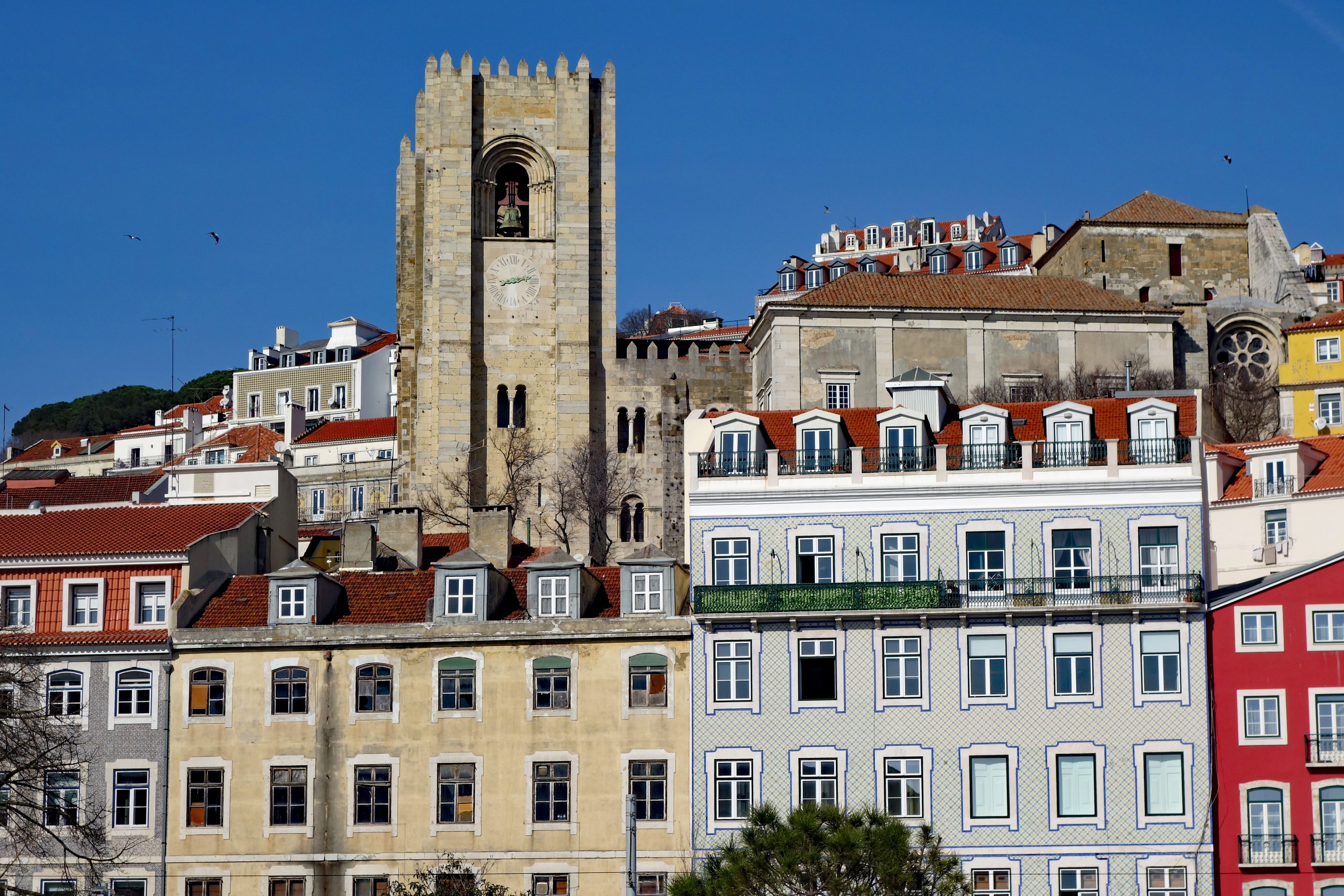
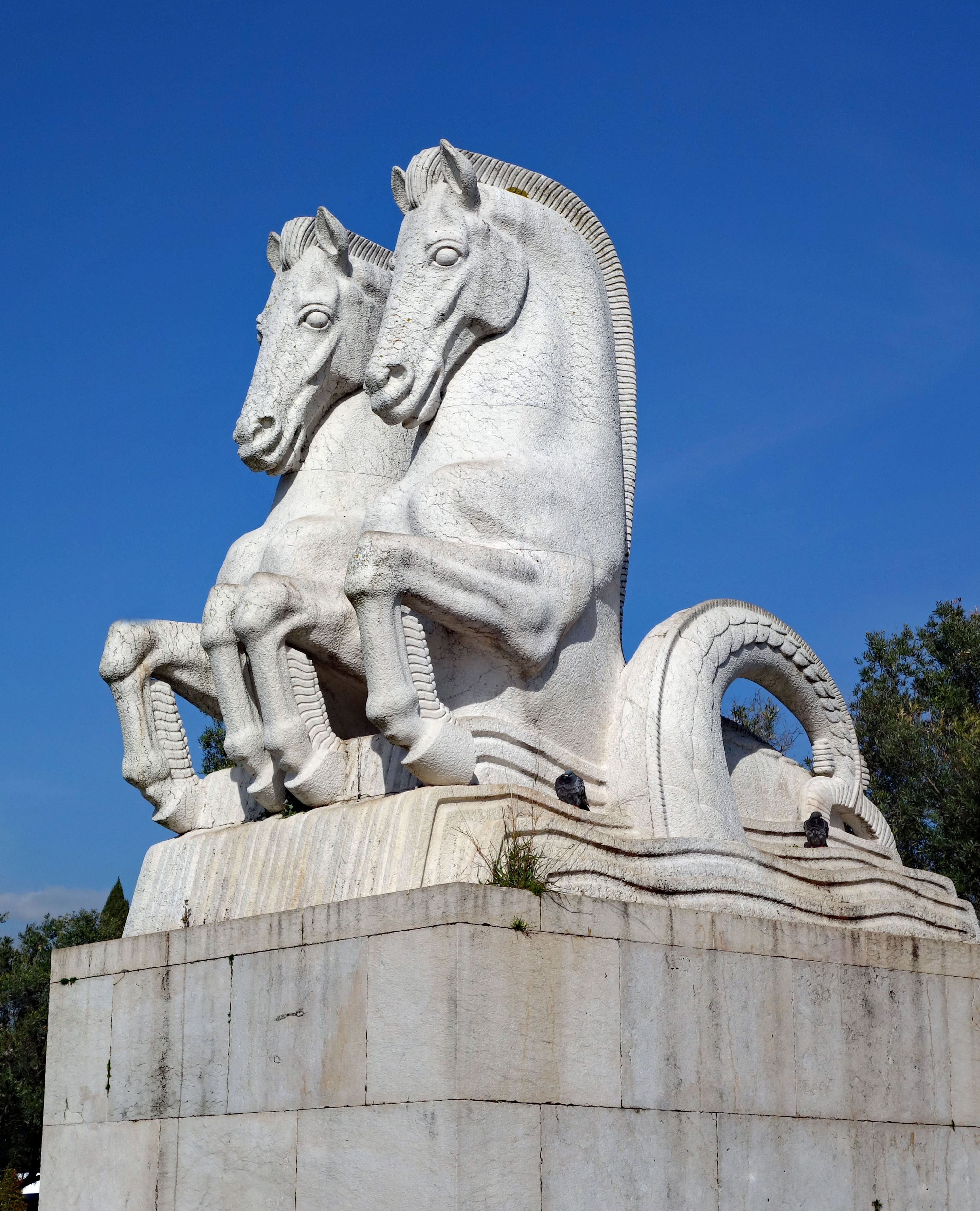
Your trip amaze me. Continue to show your journey from where you are. It’s like being with you. Have fun and just enjoy every second of it. X
Thanks Mario, glad you are with us on this journey 🙂